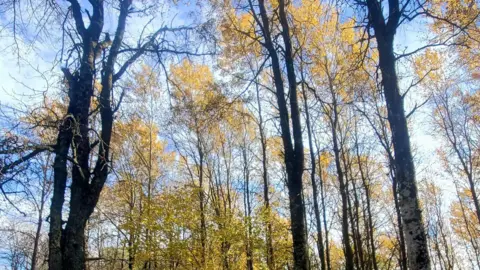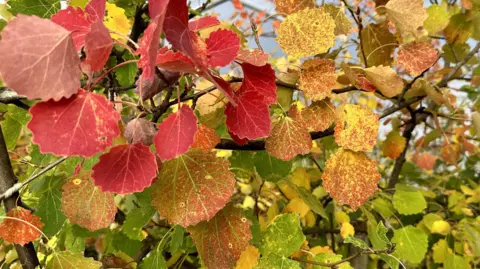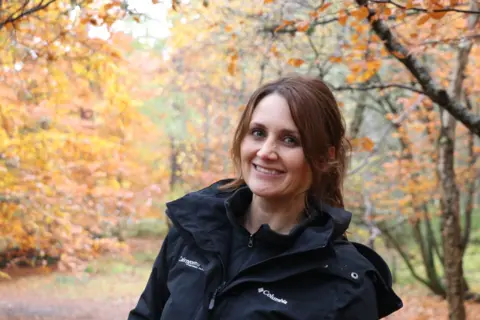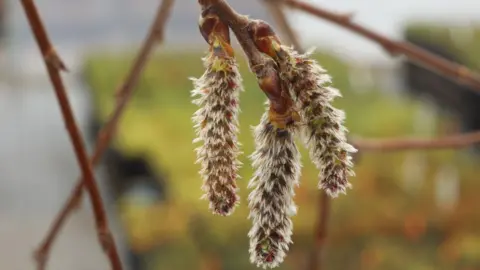Efforts under way to save endangered Aspen trees
 Trees for Life
Trees for LifeAn initiative to save one of Scotland's most endangered species of tree has been launched in the Cairngorms National Park.
Aspen provides a vital habitat for rare wildlife, plants and fungi and is one of Scotland's most important native trees.
The tree was once common but deforestation and overgrazing has caused it to largely disappear from the Scottish landscape.
A new partnership between the rewilding charity, Trees for Life, and the Cairngorms National Park Authority will map the location and health of the existing aspen population and use the information to guide the planting of new trees.
 Trees for Life
Trees for LifeTrees for Life said Aspen was an essential part of the ancient Caledonian forest, which once covered most of the Scottish Highlands.
They said it provides a number of biodiversity benefits, beings home to a wide range of rare fungi, lichens, mosses and moths - and its foliage feeds over 60 species of insect.
Aspen is highly valued by beavers, who returned to the Cairngorms last year, 400 years after they were driven to extinction in Scotland.
It is also an important defence against climate change, as it grows fast and dies young, which means it is effective at locking away carbon.
Experts believe Aspen has suffered more from deforestation than any other native tree in Scotland.
Regrowth has been challenging, as the tree rarely flowers or sets seeds in Scotland, meaning that once lost it is unlikely to return on its own.
Aspen is also a victim of overgrazing and now only regenerates on rocky slopes or cliffs, where it cannot be reached by grazing animals.
'Hugely important resource'
The new initiative will map the existing aspen tree population, including the key plants and animals which depend on it.
The mapping will help to develop growing and planting plans which will create a new aspen network.
This information will then be used to create a blueprint for aspen conservation that could be rolled out across Scotland.
 Cairngorms National Park Authority
Cairngorms National Park AuthorityHead of conservation for the Cairngorms National Park Authority, Sarah Henshall, said: “Aspen is a priority species in Cairngorms National Park and hugely important resource for rare and threatened wildlife.
"Aspen also makes a significant contribution towards healthy and resilient nature networks in the National Park."
 Trees for Life
Trees for LifeIt is hoped that, in the future, volunteers will be able to get involved in the rewilding project.
